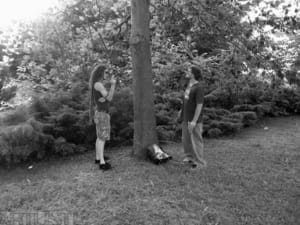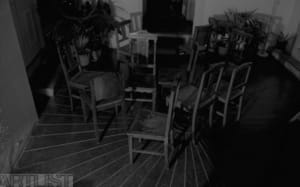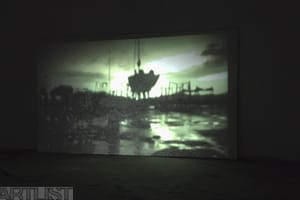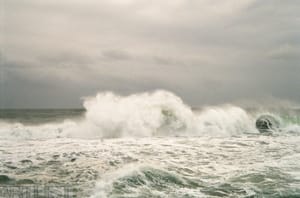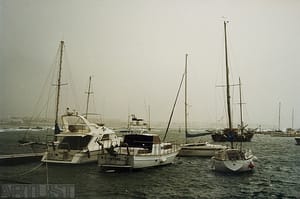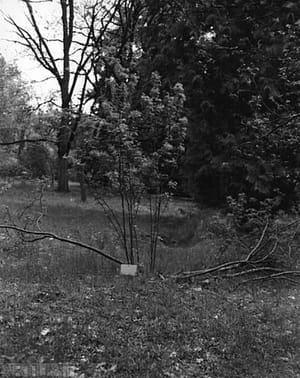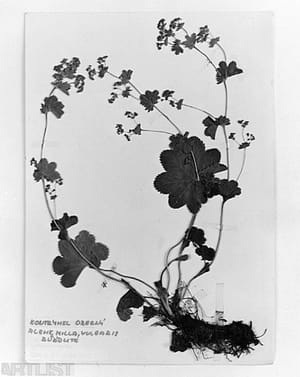- First Name
- Tomáš
- Surname
- Hrůza
- Born
- 1979
- Birth place
- Sušice
- Place of work
- Prague and Klatovy
- Website
- www.tomashruza.cz
- Keywords
- CSU Library
- ↳ Find in the catalogue
About artist
Tomáš Hrůza belongs to the youngest generation of current Czech photographers and he is also widely engaged in video art. He graduated from the studio of photography led by Pavel Baňka at the Faculty of Art and Design at the University of Jan Evangelista Purkyně in Ústí nad Labem in 2008. Following graduation he started working for the magazine Fotograf and, in addition to his independent work, he also contributes, together with his brother Petr Hrůza, to the art world with the project ArtMap.
Both of these levels of his work correlate with one another. On the one side, there is the free motive of travelling, wandering and tourism that appears in his photographs, and on the other side, there is the map as a practical tool for orientation. The project ArtMap started in 2007, originally as a printed map with an overview of current exhibitions in Prague galleries. Later it was extended by a web information portal with a national scope; in 2011 a printed Brno ArtMap was added, and in August 2012 the two brothers, in cooperation with the civic association yo-yo, published a summer guide for outside of Prague culture centres called RurArtMap.
Tomáš Hrůza’s art work is evidently interlinked with his personal life. His motifs copy his interests. Although this description may come across as too simple, it is a way of understanding his work. He concealed the instructions in simple binding. He uses a similar principle of inscription when making an image. He has done several cycles that appear, at first sight, very naturally and ordinarily – void of complicated intellectual constructions or planned attractiveness, but the inner definition of their content is very targeted and exact. He generally pursues two topics: nature and the already mentioned tourism and travelling, and both of these represent only a substitutional model for searching for situations of a person in the current world.
One of his first series’ is the Natural Motives from the years 2004-2005 (in detail: Jeřábková, Edith: Tomáš Hrůza is not a landscape painter, Fotograf, pp.92-93, Brno 2006). Two types of photographs appeared here.
It contains black and white photos of leaves of herbariums most common plants in Czech flora such as ribwort, clover or daisy and softly grey photographs of exotic shrubs and trees from the arboretum in Chudenice. Both versions offer a romantic-scientific approach, which, in a nostalgic way, reminds of nature being already once socially conserved in a museum. He used a similarly discreet, but less distant, approach in the cycle Tourists (2004-2007). As opposed to the Natural Motives, he integrated figures into the image. He positioned himself in the role of an observer and he saturated his civil photographs with the atmosphere of romantic landscapes by C.D. Friedrich. He cools the hot topic with his conceptual approach. It is evident that he is concerned with the variable definition that corresponds to the level of testimony of his individual shots, in spite of the fact that the material that he bases his work on – man and cultural landscape – remains the same. “That is why some of his takes (also within the scope of one cycle) may seem somewhat rigid, while others relaxed, some arranged, while others natural.”1/ In Standard Situations (2006) he further develops his romantic ideology, which he enriches with his creative dramaturgy, when he interlays staged and native photographs in his selection. This cycle contains beautiful photographs with atmosphere: sea observer in a harbour, little girl running in a forest, meeting of two friends with mountains in a mist in the background. From the title, with respect to a relationship to paintings, we can feel the desire to return to the great story and believe in it again – to standardize the depicted. In parallel to the reminder of landscape painting and Romanticism of the 19th century, Hrůza’s photographs also contain lightening elements in the spirit of Czech action art from the 1970s. Tomáš Hrůza prepared the video installation Expensive Cinema together with Martin Mazanec as a site specific project for the Gallery Pavilon in the year 2010. With its title this installation in a low budget gallery referred to the possibilities and limits of film as a media. The seaport (being the main motive of the six-minute segment) represents the ideal example of a cultural landscape – it is connected to a relatively open nature but it also contains a social aspect – an attractive cross of civilization and nature for Tomáš Hrůza. In the collective exhibition with Dominik Gajarský and Roman Štětina entitled A Skeleton Is Coming to the Academy (Gallery AVU, 2011) based on the High and Low concept, returns to a similar museum approach like in the photographs of plants from the herbarium (Natural Motives, 2004-2005). In the same year, he exhibited a collection of photographs in the confrontational exhibition HRDINA, NEHRDINA AND JUNÁK (galerie Sam83) with which he once again develops his Natural Motives (2004-2005) and the series Tourists (2004), but this time in a different direction. During a scholarship in Maribor, he photographed individuals in a park positioned against trees. He presented the photographs in pairs; he left the same scene in both but he changed the positions of the figures by turning them around. He created a formal differentiation of the image and through his discreet wit he, once again, leads to a simple form of thinking.
“It is not really important what I photograph with... but I like photographic film for coloured pictures for its travel character, as well as for its grain when the image is blown up; I usually make black and white photos with a travel FUJI 6x9 – this plastic thing with amazing optics. I have no preference between colour and black and white, I just use them intuitively.” 2/
1/ JEŘÁBKOVÁ, E.: Tomáš Hrůza není krajinář (Tomáš Hrůza Is not a Landscape Painter), Fotograf, pp. 92-93, Brno 2006
2/ HRŮZA, Tomáš. Bez předmětu (Without a Subject) [online]. 24 March 2013 10:40; [cit. 2013-04-01]. Personal communication.
- Author of the annotation
- Denisa Bytelová
- Published
- 2013
CV
2006 - 2007 Faculty of Art, Design & Technology, University of Derby, Derby, UK
2004 Art Department, State University New York, Albany, USA
2000 - 2008 FUUD UJEP v Ústí nad Labem, Studio of Photography (MgA.)
Exhibitions
- Solo exhibitions
-
2012
Hlavu vzhůru, Galerie Stožár, Praha CZ
Letní Ambice, De-sign, Praha CZ
2011
Se stromy, Galerie A.M. 180, Praha CZ
2010
Expensive Cinema, Galerie Pavilon, Praha, CZ
38° 38‘ 0“ N, 9° 13‘ 30“ W, Galerie U Mloka, Olomouc, CZ
2009
38° 38‘ 0“ N, 9° 13‘ 30“ W, FABS Gallery, Warsawa, PL
2008
Turisti, Galerie 35m2, Praha, CZ
2007
Turisti, Galerie Fiducia, Ostrava, CZ
Tam za řekou je Argentina (s Janem Freibergem) FABS Gallery, Warsawa, PL
2006
Přírodní motivy, Školská 28, Praha, CZ
- Group exhibitions not included in ARTLIST.
-
2012
Fotbal, Fotofestival Uníčov, Uníčov, CZ; Zkušební vrty, Dům pánu z Kunštátu, Brno, CZ
2011
Přijde kostra na Akádu (s R. Štětinou a D. Gajarským), Galerie AVU, Praha, CZ; Magický kruh, České centrum v Bruselu, Brusel, BEL; Magický kruh, Armaturka, Ústí nad Labem, CZ; Thinking like a forest, Mestni park Maribor, Maribor, SLO; Hrdina, Nehrdina a Junák (s J. Týcem a M. Junákem), Galerie SAM83, Česká Bříza, CZ
2010
One day you will lose it all, ÚLUV v rámci festivalu 4+4 dny v pohybu, Praha, CZ; Tvoření Světů, Galerie Emila Filly, Ústí nad Labem, CZ; 2010 Vymalováno (s J. Freibergem a T. Kabůrkovou) FABS Gallery, Warsawa, PL
2009
Druhá směna, Armaturka, Ústí nad Labem, CZ
2008
Diapozitiv audiovize v éře domácích médií, Galerie Školská 28, Praha, CZ; Udrž kult, Galerie A.M. 180, Praha, CZ; 10+10, Galerie U Bílého Jednorožce, Klatovy, CZ; Rozum v oku, Galerie Petrohrad, Plzeň, CZ; Start Your Collection!, Contemporary Art Project, London, UK; You Are My Freedom, Kamienica/Zbludza, PL
2007
Start Your Collection!, Contemporary Art Project, London, UK; As Is, Old Truman Brewery, London, UK
2006
„Šestka“, Pražský dům fotografie, Praha, CZ; Artfest, Kostel Sv. Vavřince, Klatovy, CZ
2005
Výstava bakalářských prací FUUD, FUUD, Ústi nad Labem, CZ; Periferie, Galerie VŠUP, Praha, CZ,
2004
2 + 18, Městské muzeum v Ústí nad Labem, Ústí nad Labem, CZ; Stelle Cadenti, Bassano in Teverina, I; Kunst, Motorenhalle Dresden, Dresden, D; Vánoce, Galerie U kostela, Bílina, CZ; 2 + 17, Severočeské muzeum, Liberec, CZ
2003
Re-kultivace, Národní zemědělské muzeum, Praha, CZ
2002
Výkvět, Galerie Profil, Bratislava, SK; Konfrontace, Pražský dům fotografie, Praha, CZ
2001
Fotofestival Funkeho Kolín (se S. Klimešem, L. Kubcem a T. Jůzlem), Kolín, CZ
- Collections
- Galerie Klatovy - Klenová soukromá sbírka USA
- Other realisations
Rezidence: 2014 El Centro de la Imagen, Mexico City 2012 Ateliér Jiřího Surůvky, Ostrava 2008 Lugar Comum center, Lisabon Symposia a workshopy: 2011 Forma Viva, Maribor, SLO 2006 Artfest, Klenová - Týnec, CZ 2004 Stelle Cadenti, Bassano in Teverina, I 2003 The Magic of Reality, the Banality of Reality, Wroclaw, PL 2000 Tělo a fotografie, Poprad, SK
Monography
- Monography
Bartoš Jan: Tomáš Hrůza, Font / První grafický časopis, č. 136 (4/2014), Praha 2014 Kolektiv autorů: VII. Nový zlínský salon / 7th New Zlín Salon, katalog k výstavě, Zlín 2014 Klimešová Tereza: Galerie Mimochodem: Kdysi tu byl les (Tomáš Hrůza), UMA: You Make Art, Praha 2014 Magidová Markéta: Tomáš Hrůza, Flash Art, r. 7., č. 28-29, Praha 2013 Ptáček Jiří: Usebraný turista, Nový prostor č. 423, Praha 2013 Artyčok.TV / Jan Vidlička: Přijde kostra na akádu, Praha 2011 Artyčok.TV / Jan Vidlička: Expensive Cinema, Praha 2010 Artyčok.TV: Tvoření světů, Ústí nad Labem 2010 Dolanová Lenka: 38° 38‘ 0‘‘ N, 9° 13‘ 30‘‘ W, Kulturní týdeník A2 č. 2/10, Praha 2010 Bartoš Jan: Tomáš Hrůza: Indiáni před záclonku, Font / První grafický časopis, č. 107, Praha 2009 Jeřábková, Edith: 10 + 10, (katalog výstavy, Galerie U Bílého Jednorožce), Galerie Klatovy Klenová 2008 Bílková Zdeňka: Rozum v oku, katalog výstavy v Galerii Petrohrad, Plzeň 2008 Freiberg Jan: Turisti, katalogový list k výstavě v Galerii Fiducia, Ostrava 2007 Šestka: šest českých fotografických škol, katalog výstavy v Pražském domě fotografie, Praha 2006 Jeřábková, Edith: Tomáš Hrůza není krajinář, Fotograf, s.92-93, Brno 2006 Freiberg, Jan: Něžný turista, Pars pro toto, s.26-27, Galerie Klatovy Klenová 2006 Fremlová Vendula: Vánoce ve zmařeném životě, Bílinský zpravodaj, leden 2004 Baňka Pavel, Thelenová Michaela, Koleček Michal, 2 + 18, (katalog výstavy, Městské muzeum, Ústí nad Labem) Ústí nad Labem, 2004
- Articles
Jeřábková, Edith: Tomáš Hrůza není krajinář, Fotograf, s.92-93, Brno 2006
Freiberg, Jan: Něžný turista, Pars pro toto, s.26-27, Galerie Klatovy Klenová 2006
